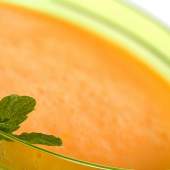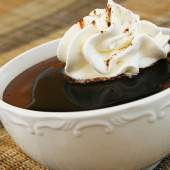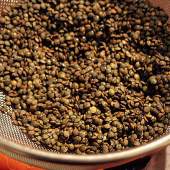Italy

“The problem with eating Italian food is that five or six days later, you’re hungry again.”
– George Miller
“Life is a combination of magic and pasta.”
– Frederico Fellini
“Leave the gun. Take the cannoli.”
– The Godfather
Welcome to a new season of Check, Please! In honor of one of this week’s chosen eateries, Sofi in Printer’s Row, The World of Food stops off in “Il Belpaese” (The Beautiful Country) or “Lo stivale” (The Boot, because of the country’s distinctive shape). We already covered pizza in a previous entry, but there’s plenty more to talk about…
Who doesn’t love Italian food? According to a recent study of the most popular ethnic cuisines by the National Restaurant Association, that number must be awfully small – up to 71% of American respondents (of all ages) enjoy Italian food at least once a month, well ahead of the two runners-up, Mexican and Chinese, respectively. This is true of even less adventurous diners – there truly is something for everyone!
Italians apportion their meals somewhat differently than we do in the United States:
Breakfast (la prima colazione) in Italy is generally a light meal. It almost always includes a milk-coffee drink such as a cappuccino or café latte. You dunk either a biscuit or cake into it, or you can mash up either of those on your plate with a little of the coffee and eat it that way.
The Italian main meal is eaten at lunchtime (il pranzo). A typical one begins with aperativo (the appetizer course, consumed with wine or spirits), followed by a selection of antipasti (olives, cheese, salami, and other items you might find on a charcuterie board). This is followed by the first course (il primo), which is composed of either pasta or soup (zuppa). The most popular of the latter, of course, is minestrone, a thick tomato-based vegetable soup that includes basil and oregano. The second, or main, course (il secondo) is the meat or fish course, generally served with a vegetable or a salad (insalata). Next, perhaps, there’s Formaggi e frutta (cheese and fruit). Following that is dessert (dolce, or sweet) – options may include tiramisu, cannoli, panne cotta, or gelato, among many others. Finally, the meal is finished off with a shot (or two) of strong coffee (espresso). Which you probably need, if you’ve eaten all that.
In between meals, you might have an afternoon snack known as merenda – think of it as a substitution for afternoon tea, only with a cappuccino and perhaps a pastry, yogurt, bread, or fruit.
Supper (cena) tends to be a much lighter affair – the meal might include broth or soup, perhaps a salad, and a few cold meats (a good way to use leftovers). It is eaten later in the evening.
More about some of the most popular Italian foods…
Pasta – the name means “paste,” because it’s literally a paste made from flour and water, with egg sometimes added to the mix. It’s then cut into a variety of popular shapes, including:
- Spaghetti (strings)
- Penne (pens or quills)
- Vermicelli (little worms)
- Fusilli (spindles)
- Farfalle (butterflies)
- Conchiglie (shells)
- Fettuccine (little slices)
There are also filled pastas such as tortellini (little pies), and ravioli and gnocchi (dumplings of differing shapes). Before it was mass-produced, pasta was made in the home and often hung outside to dry, just like laundry.
Lasagne – This pasta dish is special in that it is not only probably the oldest form of pasta, but also originated not in Italy but in ancient Greece (its name is derived from the Greek laganon, or layers). And that’s what it is: layers of flat pasta, béchamel sauce, meats/vegetables, and cheeses, baked to a golden brown.
Tiramisu – This was popularized in the U.S. by the 1993 movie Sleepless in Seattle. Rob Reiner informs Tom Hanks that it’s the next big thing on the dating scene, and it was so new in America at the time that the movie’s distributor got many calls asking the meaning of the joke. Of course, we know now that it is a rich dessert composed of ladyfingers soaked in espresso, layered with a mix of custard and mascarpone cheese, coated with cocoa powder. Sometimes, alcohol is added to the mix. Fittingly, its name in English means “pick-me-up.” And it certainly is!
Cannoli – These are fried pastry “little tubes,” filled with sweetened ricotta or mascarpone cheese, and augmented with crushed pistachios, candied fruit, and sometimes chocolate. They are particular to Sicily.
Panettone – A bread-like fruitcake, popular at the Christmas holidays. They can be found in any specialty grocery store at that time of year. (By the way, at Easter, Italians enjoy la colomba, a similar sort of bread-cake, but in the shape of a dove.)
Saltimbocca – The English translation of this dish is “jumps in the mouth.” It is a veal dish incorporating (or wrapped in) sage and prosciutto and soaked in butter and white wine, saltwater, or oil. In America, chicken is sometimes substituted for the veal.
There have been many Italian ristorantes reviewed on Check, Please! over the years. Take a look at our reviews and try one in your neighborhood!
Buon Appetito!





